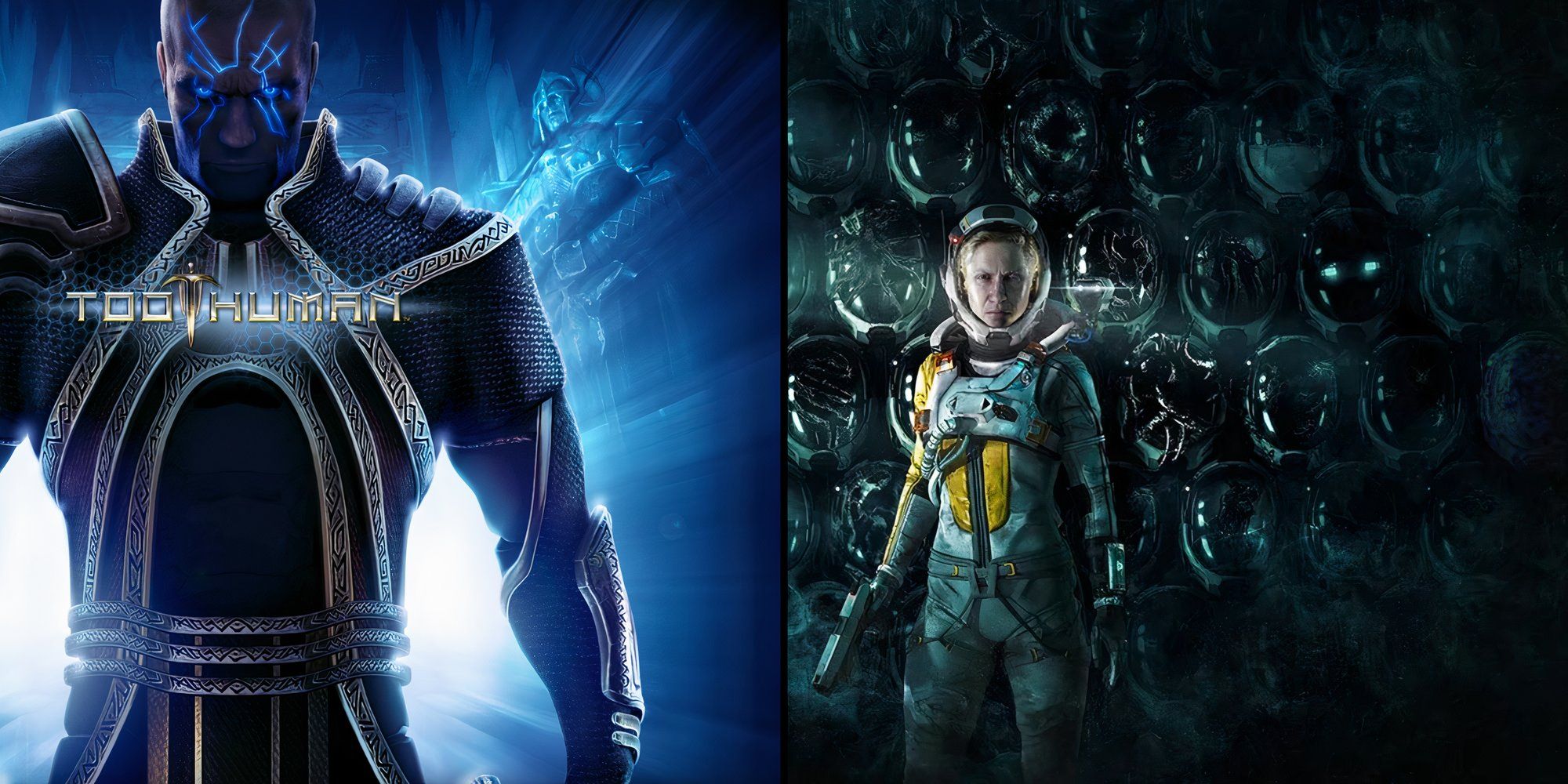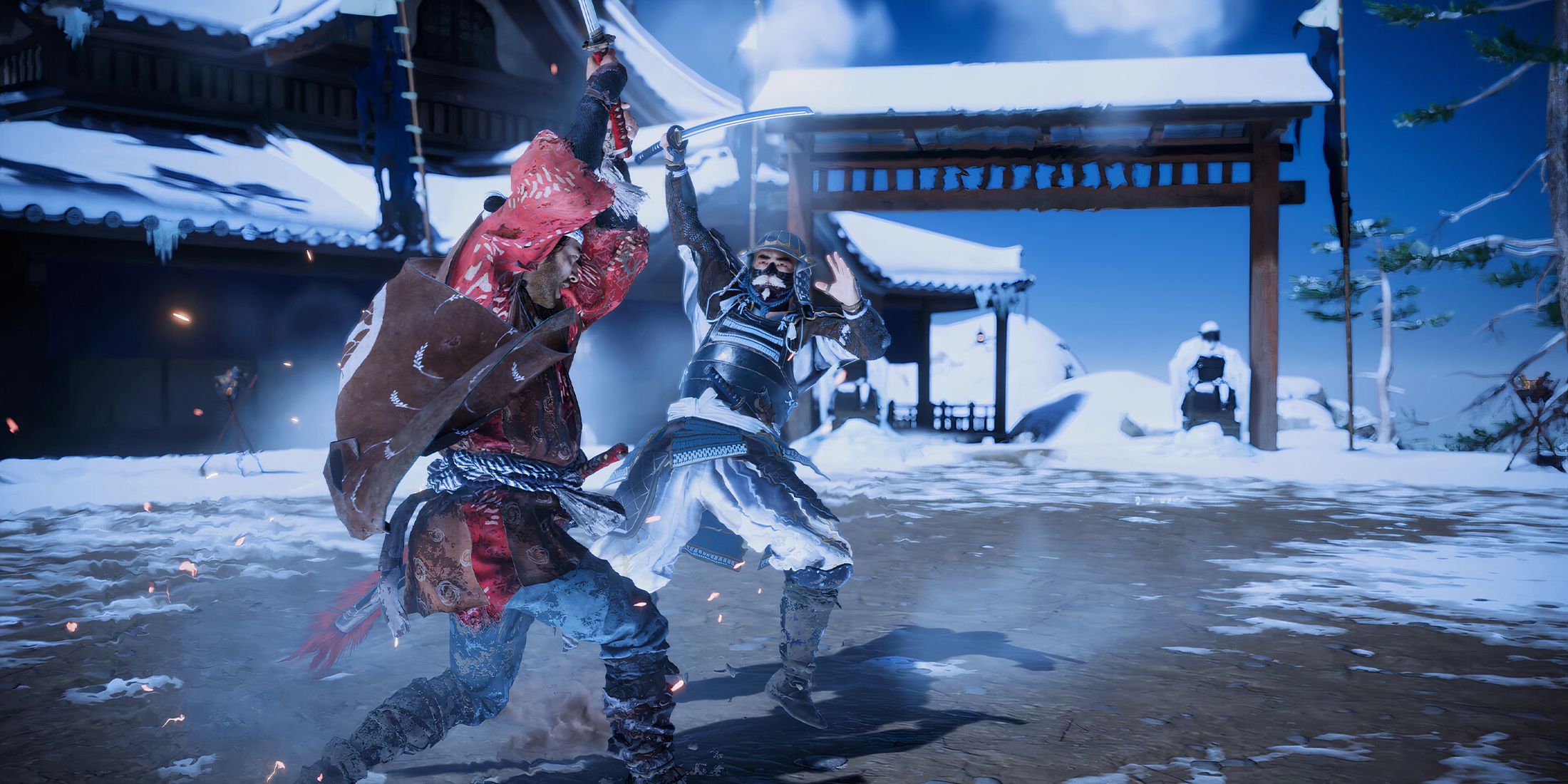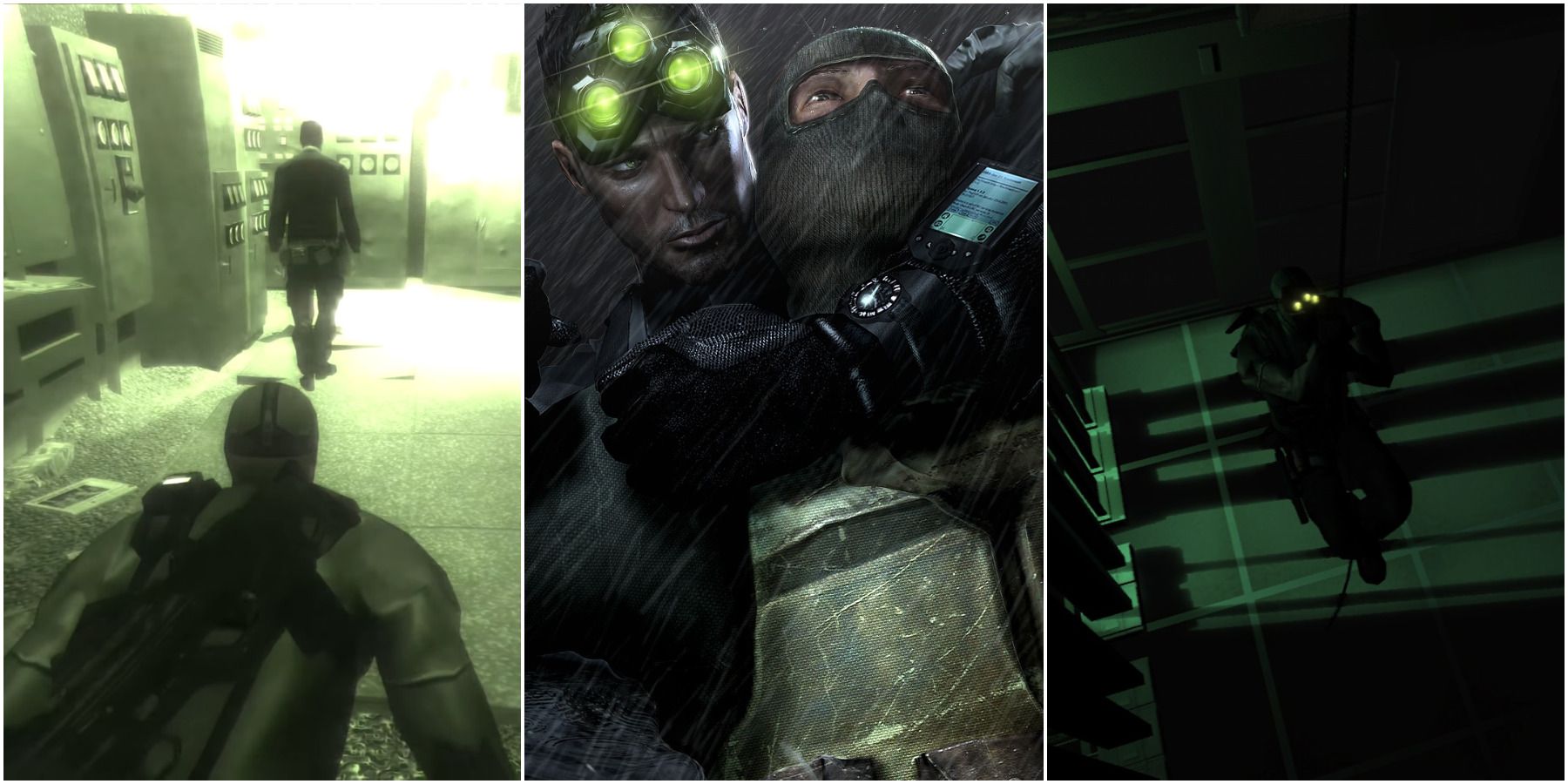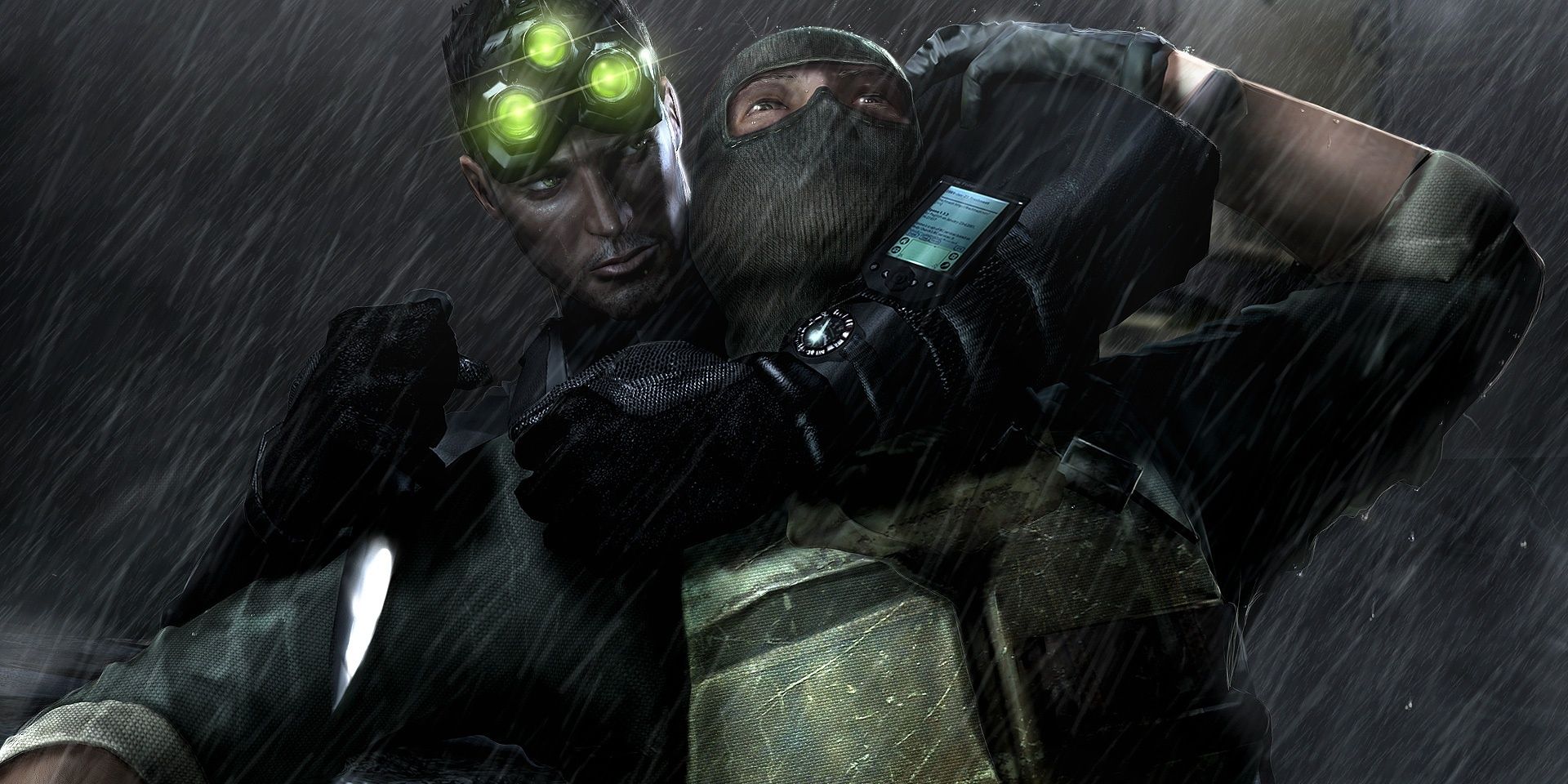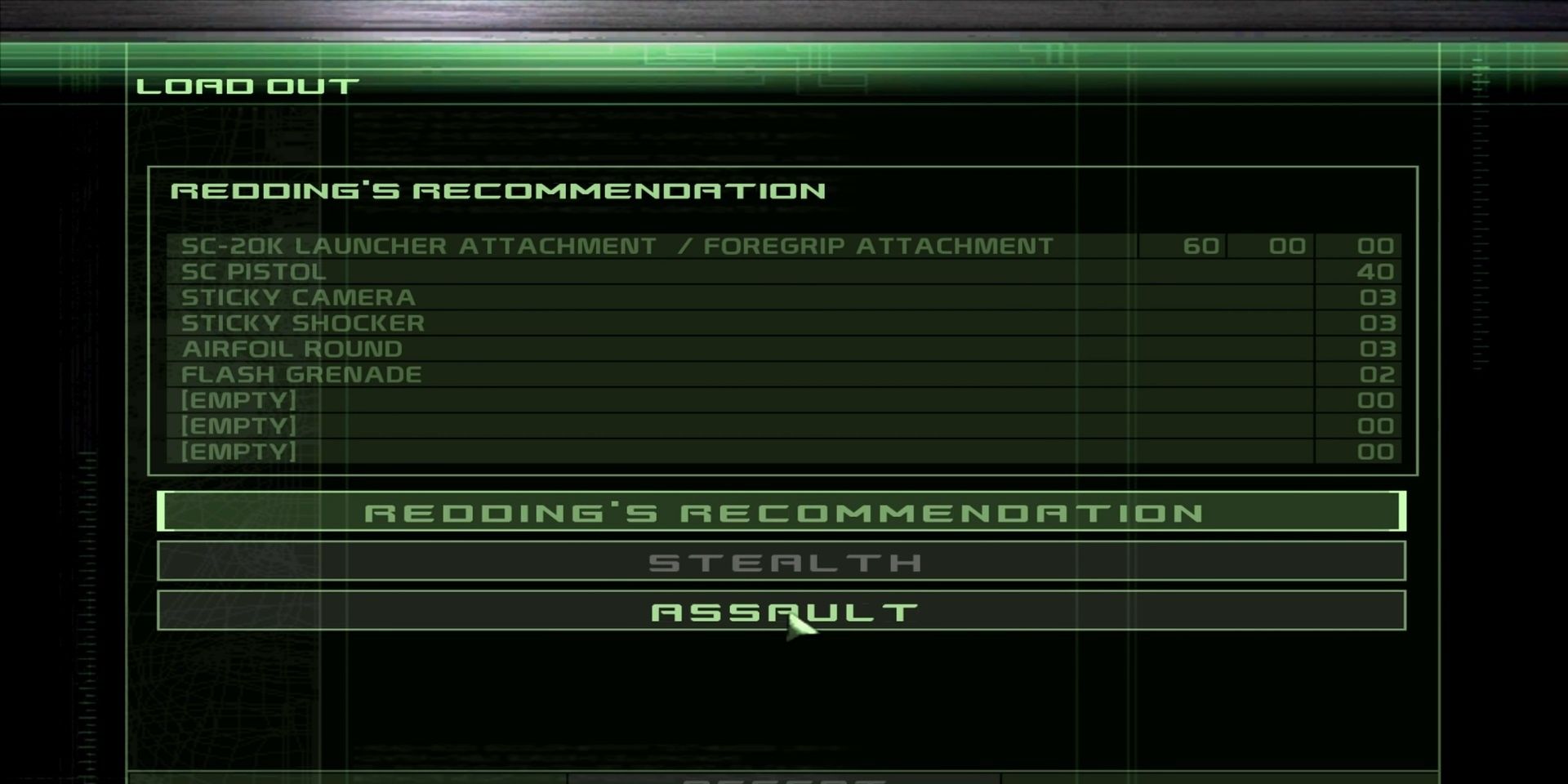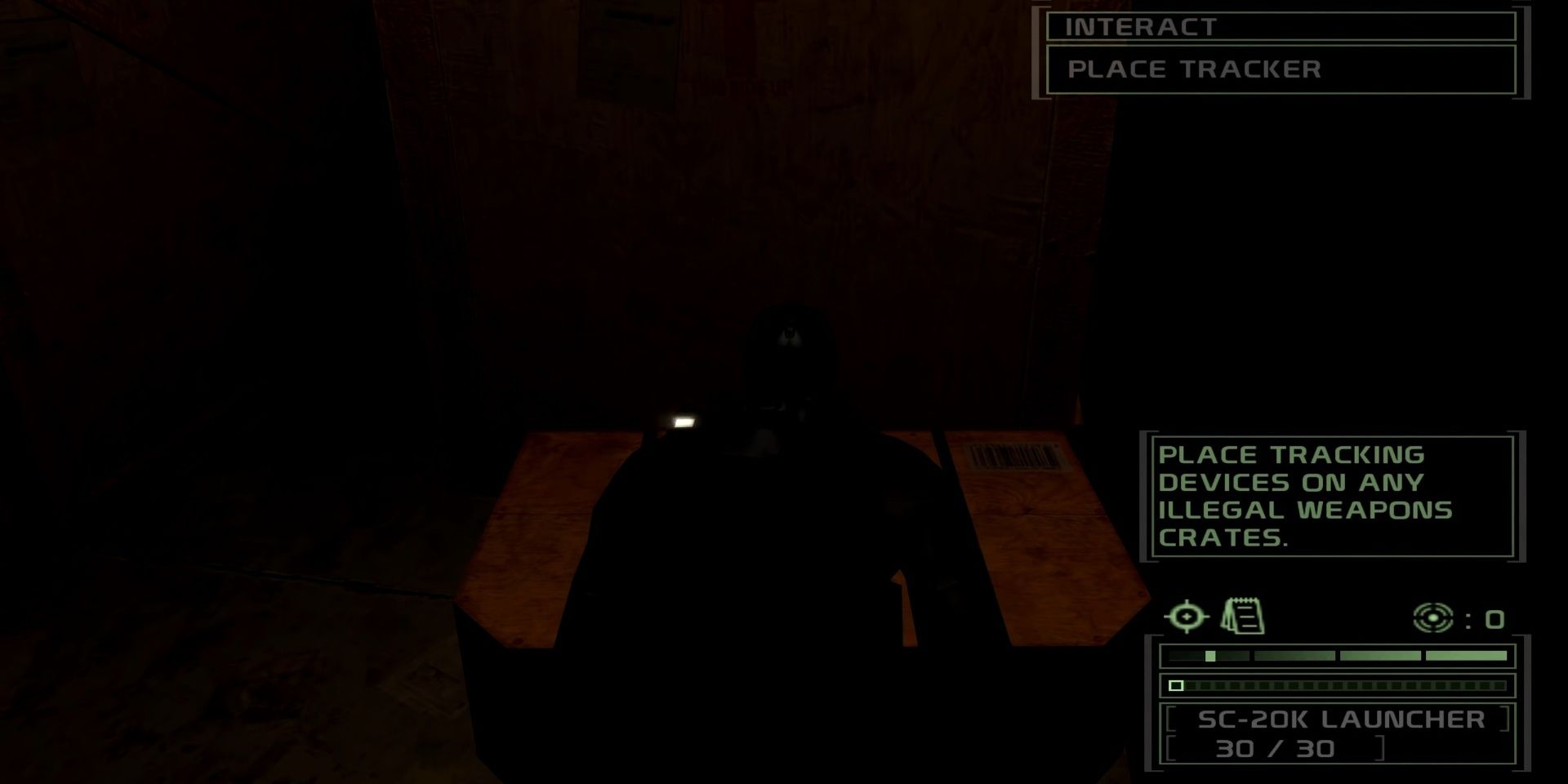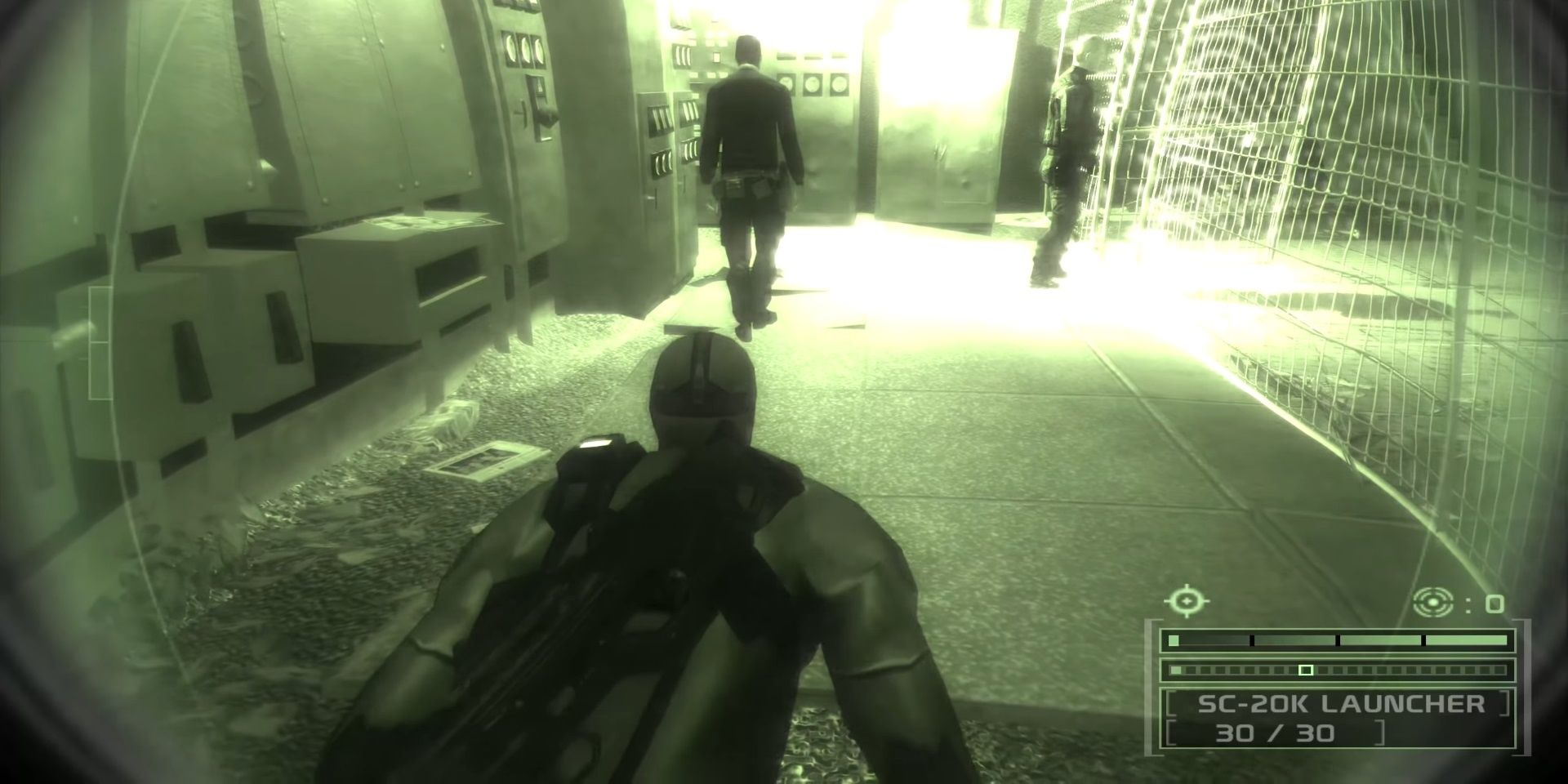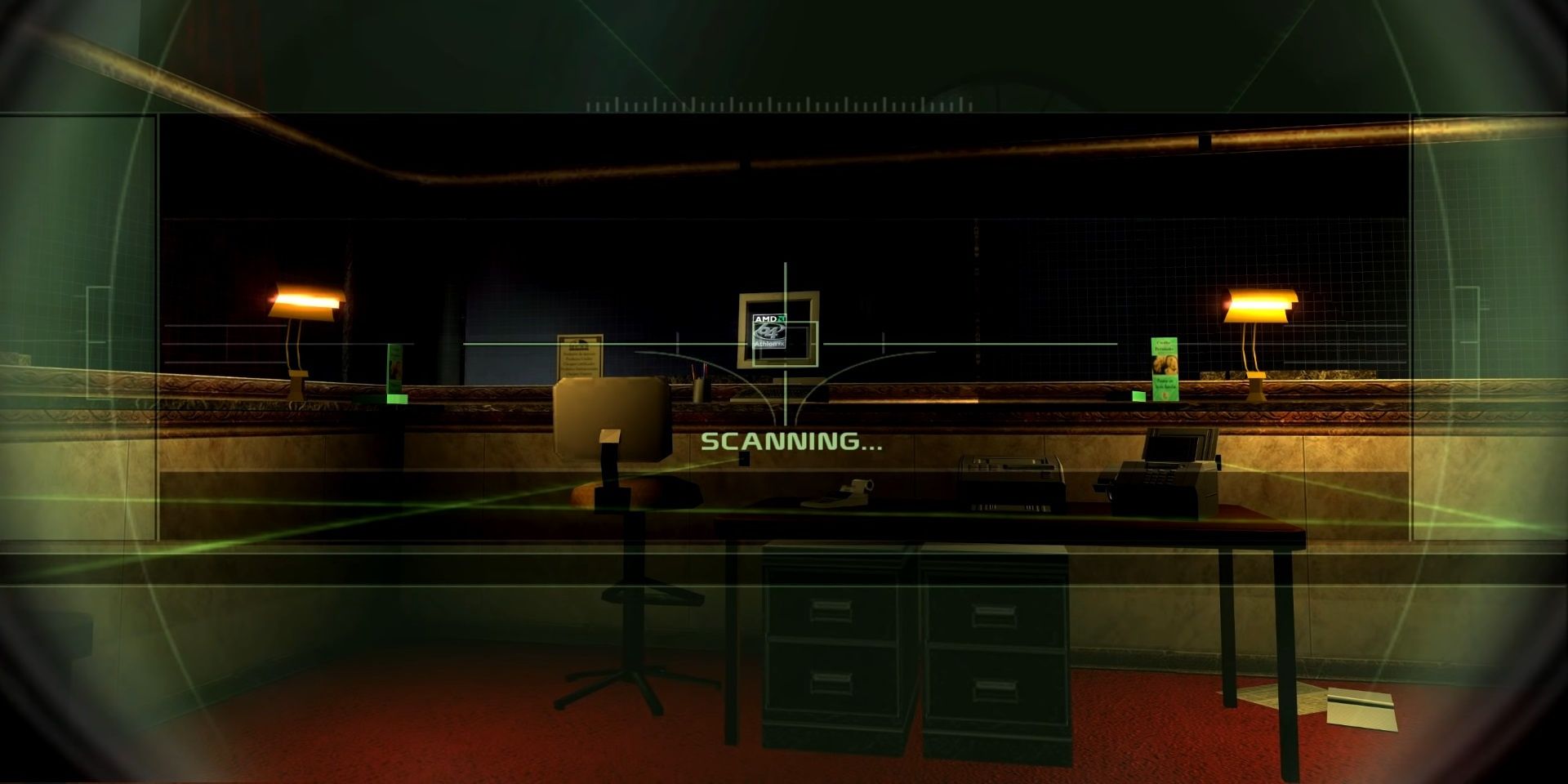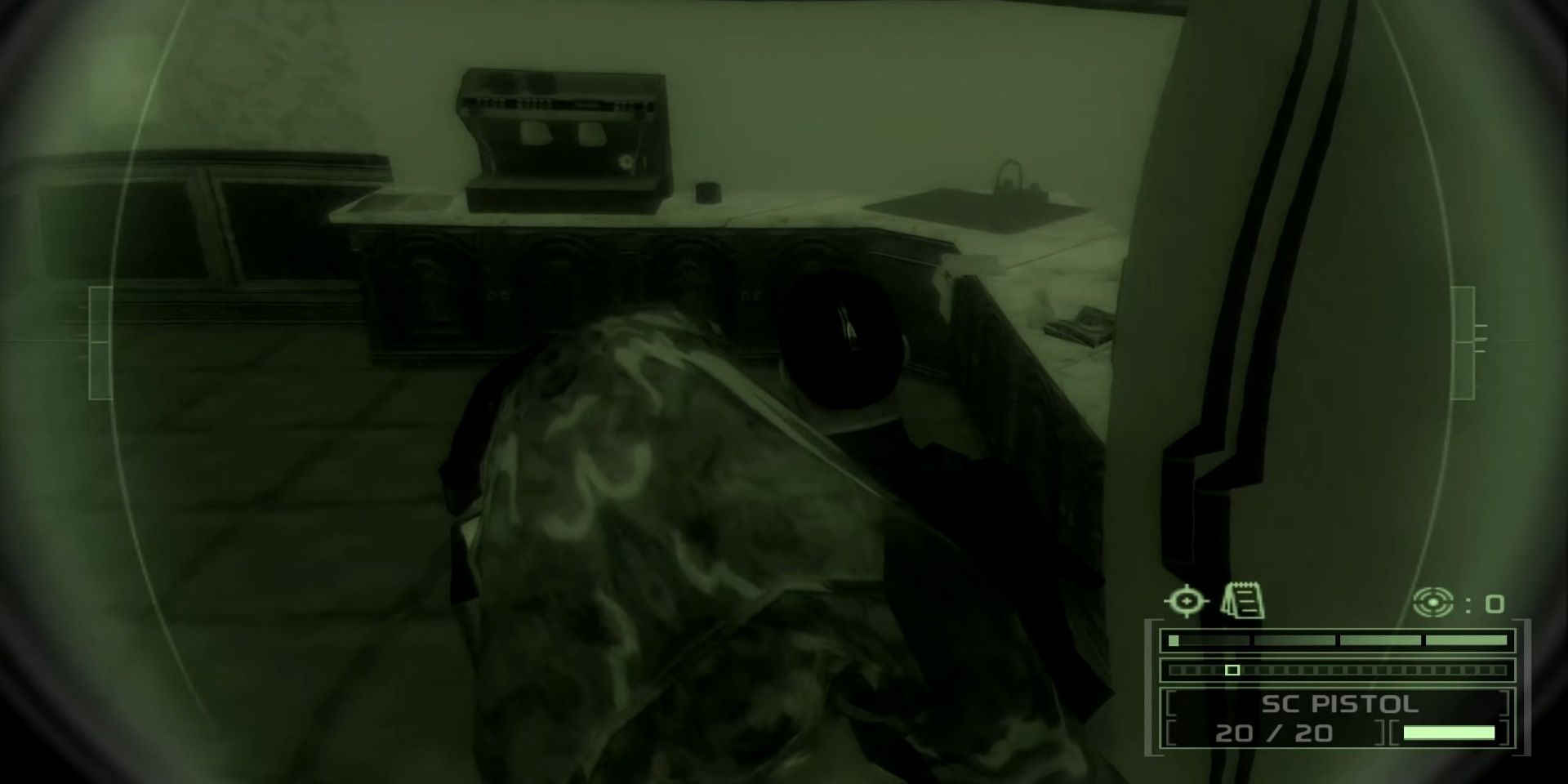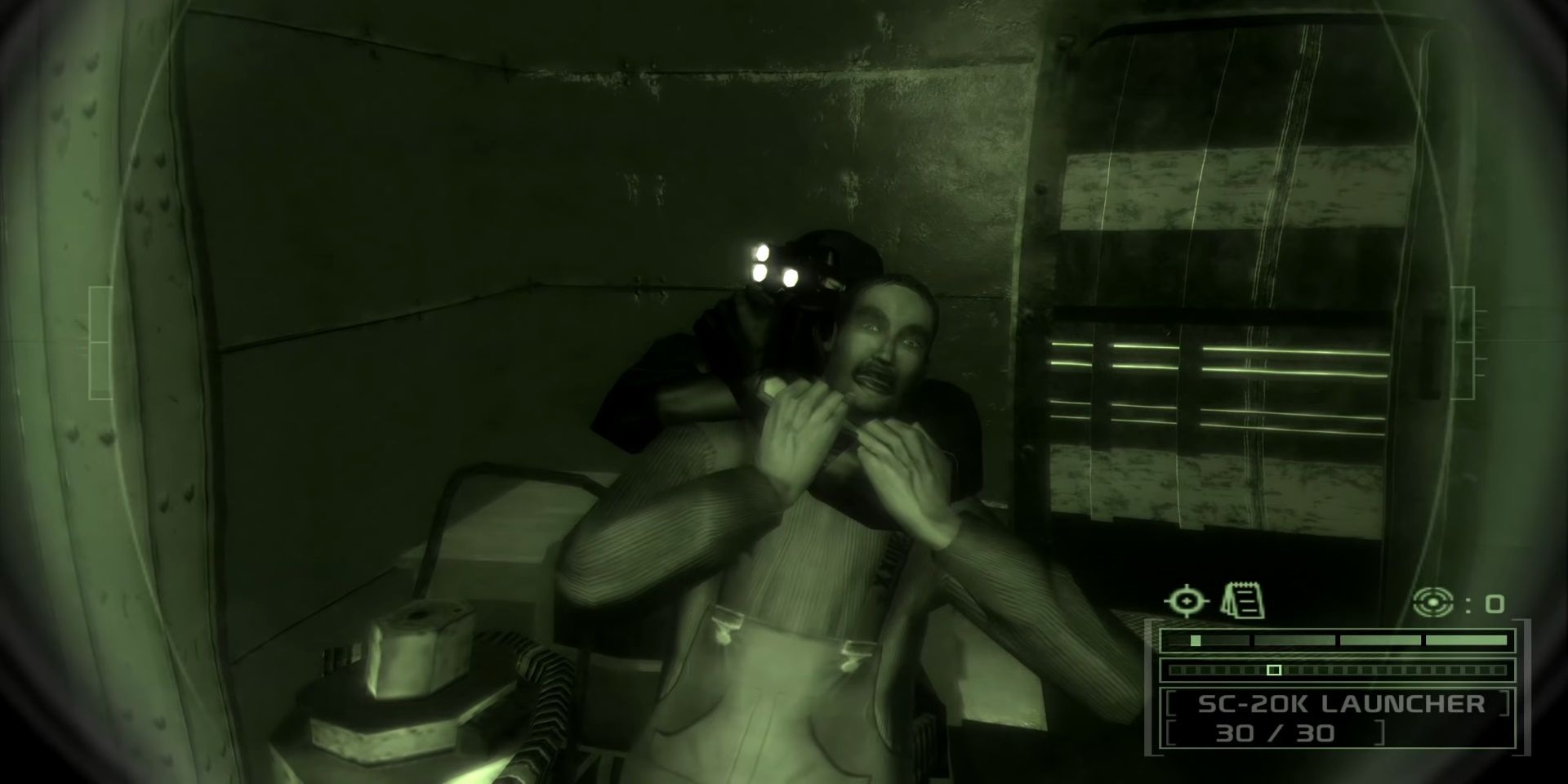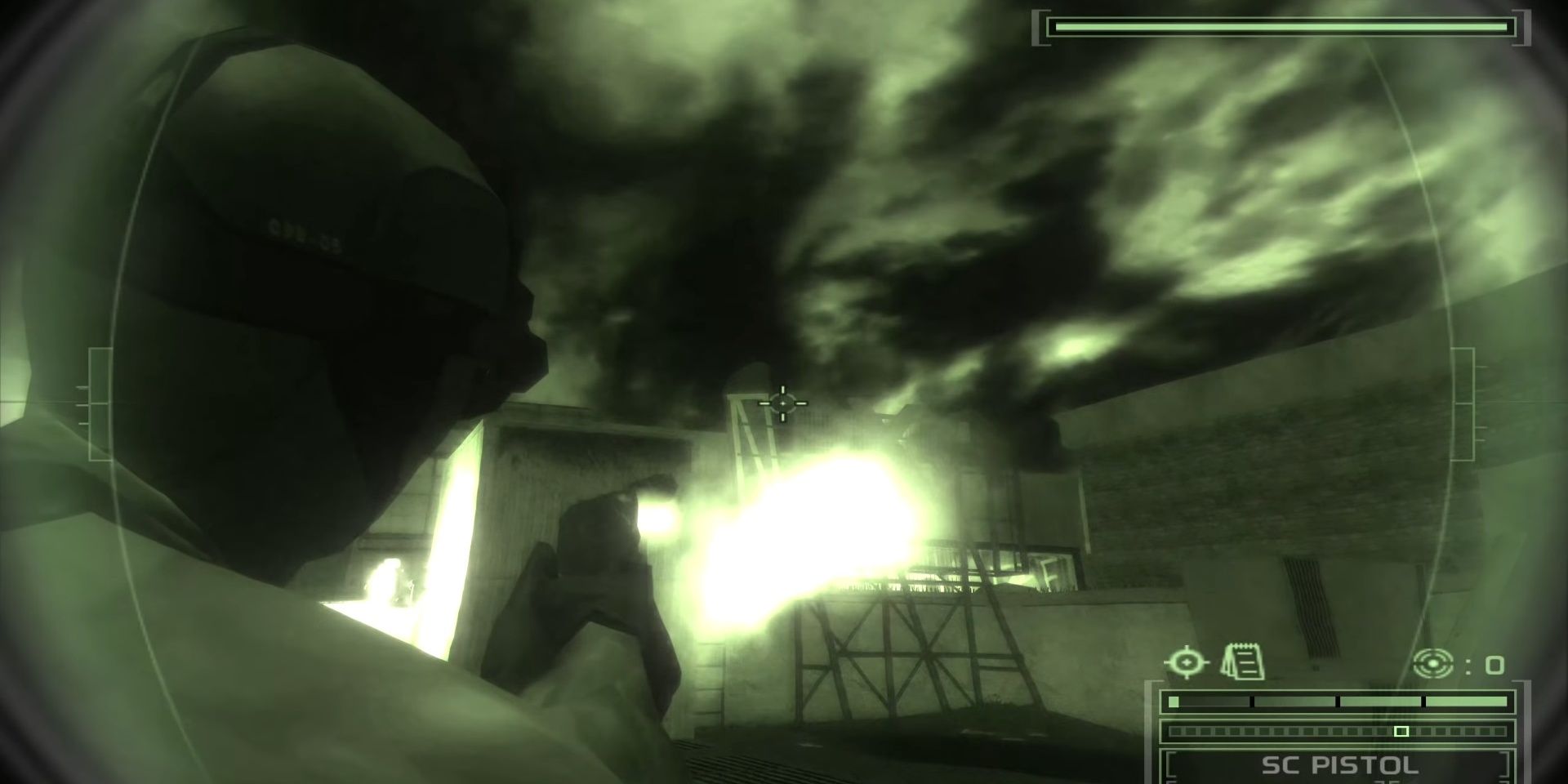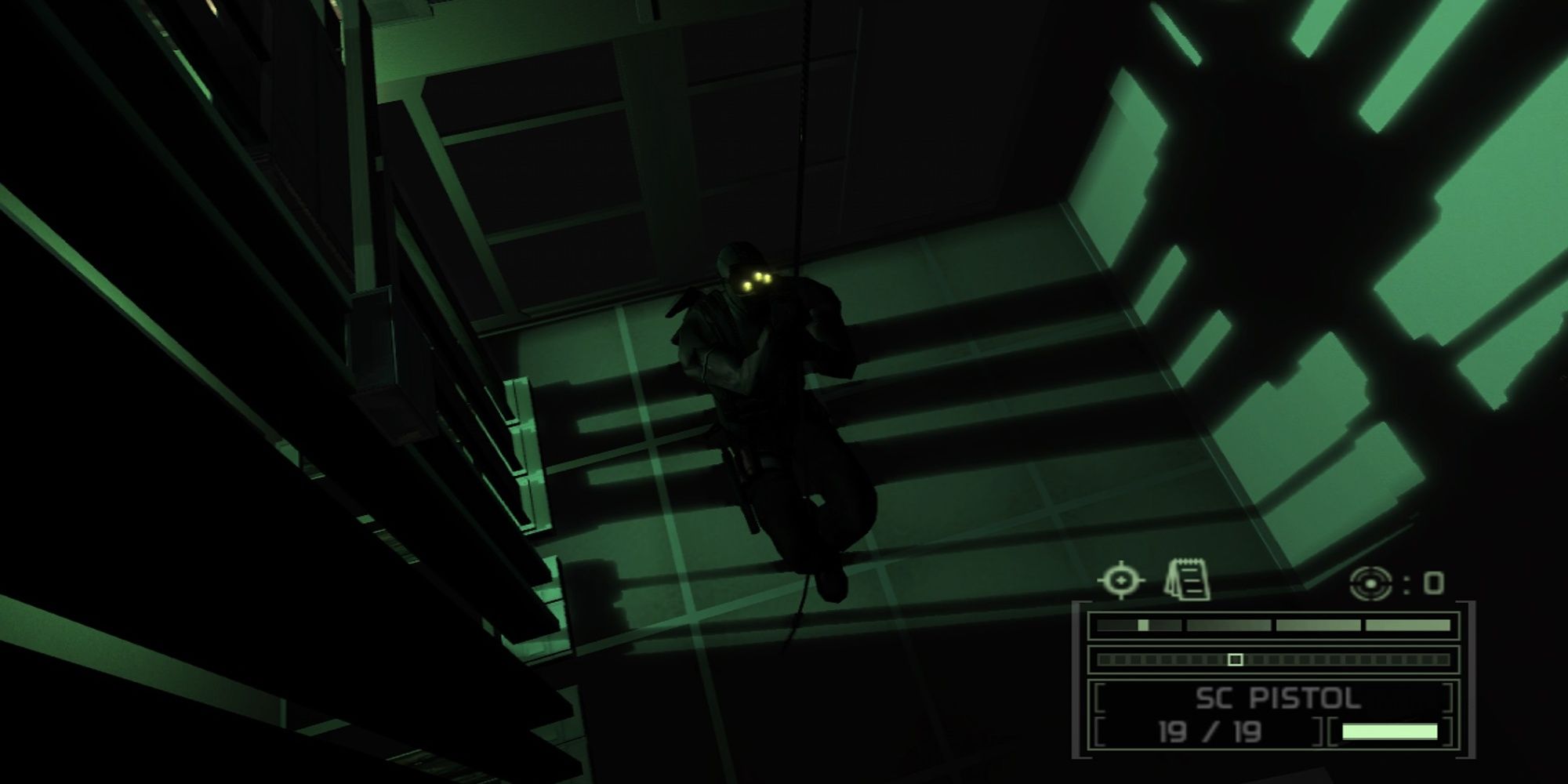Despite its age, Splinter Cell: Chaos Theory is still an immensely satisfying game to experience. Playing as Third Echelon's slick super-spy Sam Fisher, fans are tasked with slinking their way through a variety of dangerous locales to complete their objectives. Nevertheless, staying swift and silent like a ghost is tougher than it looks.
For players new to the Splinter Cell franchise or stealth games in general, Chaos Theory might seem intimidating. Fortunately, mastering the game's finer points just takes a little patience. After following these tips, beginner players will be on the fast track to completing Splinter Cell: Chaos Theory in serious style.
10 Patience Is A Virtue
Although it may seem obvious, it's worth highlighting that Splinter Cell: Chaos Theory is a game of patience. Like most other stealth titles, rushing through an area without first studying the surroundings typically results in Sam getting spotted. Plenty of frustrating heartaches can be avoided in the long run if players simply take their time from the beginning.
In Chaos Theory, nothing is lost by taking things slow. Always be cognizant of where enemies are located. It's recommended to get into the habit of keeping one eye on the Light Meter. Sam is practically invisible when the bar is all the way to the left. Before emerging from the safety of the darkness, check to see where the guards are looking. Then, make your move.
9 Choose The "Recommended" & "Stealth" Loadouts
Technically, Chaos Theory doesn't have to be played with strict stealth in mind. Sam does carry plenty of offensive weaponry to take the fight aggressively to an enemy. However, this gung-ho strategy is risky, considering Sam can still be killed rather easily. For beginners, especially, stick to a pure stealth playthrough.
Before the start of every mission, Sam will have three choices regarding his loadout. For new players, it's perfectly acceptable to select the "Redding's Recommendation" loadout every time. This gives Sam a mixture of both stealth and assault weaponry. Once players feel more confident, choosing the "Stealth" loadout is the next best option.
8 Complete Secondary, Opportunity & Bonus Objectives
In every mission, Sam always has a set of primary objectives he must complete. However, in addition to these main goals, a series of additional objectives are present that Sam's superiors want him to complete. Ignoring these side tasks won't result in any drastic negative consequences.
Nonetheless, it's highly recommended to complete every objective in a mission. Not only will fans receive extra bits of story, but these tasks also represent additional ways to hone one's skills. Chaos Theory isn't a long game by any stretch, so taking the time to witness everything is well worth it in the end.
7 Don't Be Afraid To Whistle
In a game that's all about avoiding the attention of enemy guards, whistling may strike new players as counterintuitive. However, the whistle is one of Sam Fisher's secret weapons. Breaking it out at the right moment can make previously-difficult encounters seem simple.
Sometimes, there is no clear way to proceed without removing a guard from the equation. If getting close isn't an option, luring him away with a whistle is possible. The key is having a viable exit strategy that gets Sam out of the path of the approaching enemy. If whistling doesn't do the trick, consider breaking out gadgets like the Sticky Camera to cause a distraction.
6 Use The EEV
Hacking computers and other electronic devices is a necessary part of the job in Chaos Theory. Most of the time, Sam can directly access these computers by approaching them. Nevertheless, there are moments in the game, such as the Bank level, where directly accessing a computer can expose Sam to unwanted danger.
This is where Sam's EEV proves indispensable. With this tool, Sam can remotely hack terminals and computers from a distance. The only downside to this method is that hacking objects through the EEV is more challenging. However, if the alternative is exposing Sam to unnecessary attention, then utilizing the EEV is the player's best (and safer) bet.
5 Don't Forget To Hide Those Bodies!
No matter how stealthy a player may be, there will be moments where guards need to be neutralized. Whether or not enemies are dispatched lethally is up to the player. It's worth mentioning that killing enemies results in a reduction to the player's overall stealth rating. Regardless of the method, it's generally not a great idea to leave bodies strewn across the map in plain sight.
Smart players should always hide enemy bodies in a safe location. Ideally, these should be places that are engulfed in complete darkness as well as off the beaten path of enemy patrols. Dead/unconscious guards that are discovered will negatively impact a player's score.
4 Interrogate Guards
Grunts unfortunate enough to find themselves in Sam's clutches often yield important tidbits of information. Interrogating guards is entirely optional in Chaos Theory. Players will be none the worse for wear if they choose not to do it even once. Ignoring the interrogation sequences, however, would be a mistake.
Part of the game's enduring charm is the notorious humor embedded in its interrogation scenes. Fans will miss out on plenty of genuinely humorous dialogue between Sam and his victims by skipping the interrogations. Besides the humor, beginners will find the intel from these encounters useful, as they often reveal clues to objectives and the location of nearby supplies.
3 Always Use The Lockpick
Locked doors pose only a minor obstacle for Sam Fisher. When approaching a door, the first thing beginners want to do is check what's on the other side with their Optic Cable. It's a little embarrassing to open a door only to find a hostile guard staring back at you. Once the coast is clear, it's time to break out Sam's trusty Lockpick.
The Lockpick is nothing fancy, but it's silent. Players need to take a few moments to get the Lockpick in the right position to bypass the tumblers. Conversely, Sam's knife can unlock a door instantly, but it's louder than one may think. It also leaves a trace; guards who stumble upon the broken lock will become immediately suspicious. Thus, it's better to be patient and pick every lock Sam comes across.
2 Make Liberal Use Of The OCP & EMF Vision
Lights may as well be one of the enemies in Chaos Theory. Alongside his gadgets, darkness is unquestionably one of Sam's friends. Players have a few options when it comes to dealing with lights. The most direct way is to shoot them, preferably with Sam's silenced pistol. However, similar to breaking locks, shooting out lights is sloppy.
The preferred method for dealing with unwanted illumination is through the liberal use of Sam's OCP, an attachment to his pistol. Firing the OCP at an electronic device will silently (and temporarily) disable it. Players will know the attempt was successful if the light in front of Sam's pistol turns green. The OCP needs a few seconds to recharge before it can be used again.
A good tool to use in conjunction with the OCP is Sam's EMF vision, courtesy of his signature goggles. EMF vision will display targets affected by the OCP in white. That way, players can know beforehand whether or not it's worth using the OCP on a particular object. With these two gadgets, Sam can traverse even well-defended ground with ease.
1 Be Mindful Of The Sound Meter
Alongside the Light Meter, the Sound Meter is also critically important. Players will notice a white square that often moves along the length of the Sound Meter. This represents the ambient noise in Sam's immediate surroundings. When the white square is further to the left, it means things are relatively quiet. The opposite is true when the square is further to the right.
When Sam makes a noise, the Sound Meter begins to fill up. If the sounds the player makes exceed the white square, it means enemy guards can potentially hear Sam. If the sound of the player's movements fails to reach the white square, enemies won't be able to hear Sam. Use this information to dictate how fast or slow Sam should move in a particular area.
Splinter Cell: Chaos Theory is currently available on numerous legacy platforms.


